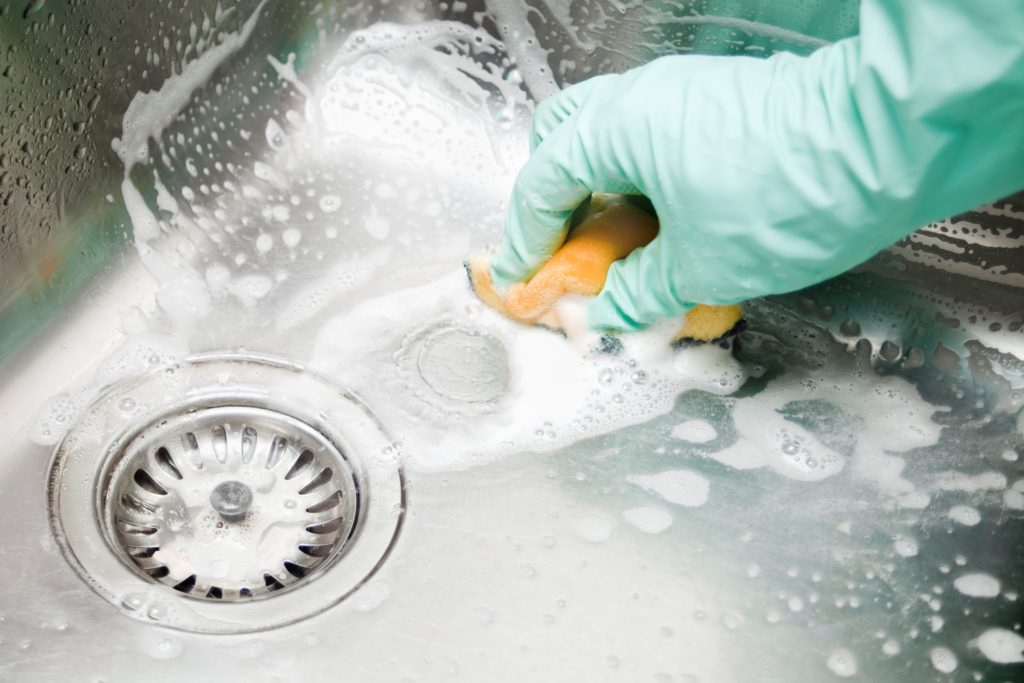When most people deep clean their homes, the Kitchen Sink often is overlooked. After all, you rinse once it’s emptied right? Maybe occasionally scour it? Now it looks clean, so it must be clean.
Well, take it from us, rinsing alone just isn’t enough. Scouring helps, even more so if you use the right cleaning agent. But the fact remains that your kitchen sink is the germiest spot in your home, followed closely by a sponge.
To stop microorganisms from setting up camp in your sink, you should wash and disinfect the sides and bottom at least one a week. There’s one exception to that rule: clean your sink immediately if raw meat or dirt from potatoes are part of your meal.

Kitchen Sink
The best way to clean a sink is with hot water and soap but at least once a month, use vinegar or bleach. The hot soap and water provide the sparkle while vinegar and bleach kill the germs.
Once you’re done cleaning, use a disinfectant wipe to remove the cleaning product residue. Also, if you do opt for bleach over vinegar, use a cap-ful of bleach with one gallon of water and then rinse thoroughly afterward.
As for that nasty kitchen sponge of yours, replace it at least once a month. In the meantime, microwave your damp sponge for a minute every day or run it through your dishwasher, including the drying cycle.
According to the Huffington Post, “Kitchen sponges not only act as reservoir of microorganisms, but also as disseminators over domestic surfaces, which can lead to cross–contamination of hands and food, which is considered a main cause of food–borne disease.”
You also should clean and disinfect your sink following a drain blockage when water has backed up into your sink. If your DIY efforts aren’t enough to remove the blockage, then it’s Eagle Service Company to the rescue. We have everything it takes to remove drain clogs large and small, indoor and out. Contact us today or anytime for prompt and dependable service.


